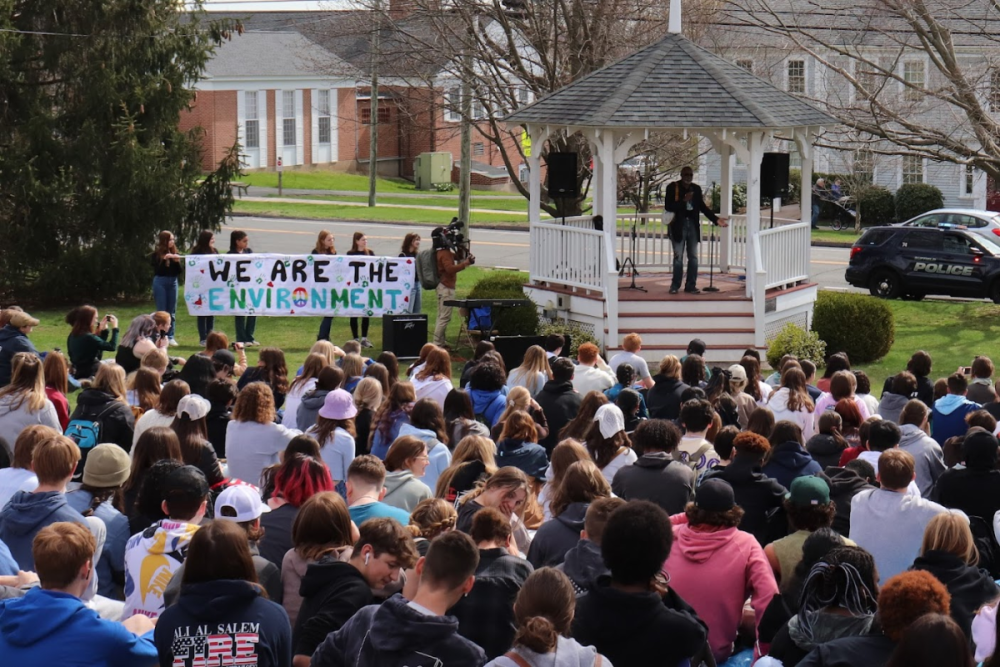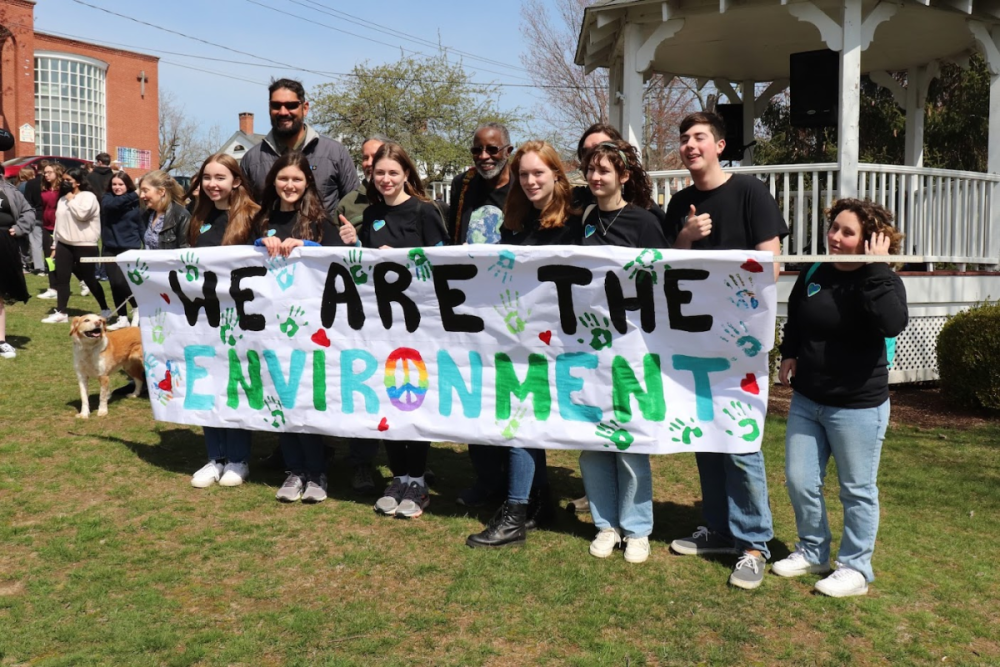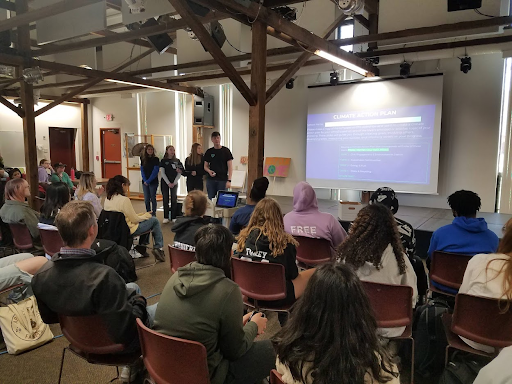Students and Teachers Find Inspiration in Leading Their Community

Welcome to our blog series, CEE-Change, Together. Each month, NAAEE will post narratives from the CEE-Change Fellows as they implement their community action projects and work to strengthen environmental education and civic engagement capabilities, all supporting the mission of cleaner air, land, and water. Join us on their journey! The Civics and Environmental Education (CEE) Change Fellowship is NAAEE’s newest initiative to support leadership and innovation in civics and environmental education in North America. This ee360 program is a partnership between NAAEE, US EPA, and the Cedar Tree Foundation.
After a brief career as a wildlife biologist field tech working in the western part of the United States, I got to feeling as though I was rearranging deck chairs on the Titanic. Living in remote places was interesting and beautiful, but when it came to impact, I felt like I was missing the proverbial boat. It wasn’t enough. Although I tried to deny it, I (like my mother, sisters, uncle, and two aunts) was pulled toward education. It was my thinking that if I could be in a place surrounded by young people, maybe I could teach them to care about the natural world—and just maybe do something to help to save the place.

I spent 17 years with varying degrees of success trying to inspire and awaken my students to the ever-mounting environmental crisis—but then something changed. It came in two major pulses. The first came from reading the incredibly disheartening International Panel on Climate Change Report. For all of those awake to the science, the report was devastating and it made me realize I needed to take a larger role immediately. The second pulse came like a breath of hope. I started seeing youth all over the world, inspired by a young braided Swedish high school student, taking to the streets and demanding change.
It was totally inspiring, and in some ways, it was like a clarion call with echoing reverb reiterating "the time to act is now."
For me, action came in stages. It started with an impassioned plea on the morning announcements asking kids if they were sick of the apathy and inaction of adults and if they wanted to be part of changing their community. I spent the next year with about 30 kids planning an epic three-day event whose main focus was a walk (accompanied by National Geographic Explorer Dr. John Francis, the “Planet Walker”) to the Connecticut Science Center in Hartford, waking up schools as we walked from community to community. Everyone was abuzz with excitement. Our teachers were teaching about climate change. We’d forged partnerships all over. Then, like so many plans, we were canceled three weeks before our event due to the COVID-19 pandemic.
What can you do? The world turned upside down, so, as the adage says, when the going gets tough, the tough get going. Regrouping, we planned a 2021 virtual event, and while it was awesome, my crew of kids and teachers never took their eyes off the prize: This year we made our three-day event happen. We shut down the town’s main thoroughfare, and 400 students and teachers walked to the Green where we educated and entertained them with speeches and booths from about 40 different local and national non-profits and student exhibits. The next day, we walked from our town to a park in a neighboring community and trained students from a number of schools in northwest Connecticut to write climate action plans. Day three found kids and parents cleaning up their community in a boots-on-the-ground effort. I still can’t believe it happened.
The work wasn’t just ‘student centered’—it was truly a community working together based on shared concern and a desire to do good, and it felt more real than anything I've done in education for the last 20 years. It changed me as a teacher, and as a person.

What made this amazing for me was, of course, the kids. There was no grade. The work was endless. There was no roadmap. From networking to meeting with everyone from administrators to VP’s to the police chief, from cold calling superintendents and building websites to creating marketing materials and writing newspaper articles—so much of what was asked was way out of their comfort zones—and they CRUSHED it!
Some of My Takeaways
This entire experience couldn’t happen if we did things the way they are normally done—and it certainly wouldn’t have been as powerful. I ditched the traditional top-down power structure because, in my opinion, that approach doesn’t work. What did work was treating kids as equals.

What also worked was giving them something real to sink their teeth into. What worked was treating them as partners; after all, this was new for me, too, and I needed their help, imagination, and advice. To that end, they came to every meeting and added a student perspective. From route planning to meal planning, they were partners in everything, and though sometimes they were uncomfortable they rose to the challenge.
To deal with the enormous amount of logistical planning, we formed a student leadership group of seven kids from the 35 regular members. Paying them was the right thing to do, so we did (thanks, CEE-Change Fellowship!). We held two meetings a week: one for the general crew, one for the leaders. We created a massive system of organization. Things like this have so many moving parts, so keeping track of them is of paramount importance. Who emailed who? Did we call? We planned the release of materials to build a buzz and built a coalition of teachers to help.

When I asked our partners to stand up at a faculty meeting and teachers and admin saw how many students and staff members were already on board, others felt compelled to join us. Those who didn’t, well, they didn’t derail us. Also, and this is important—daring to go really big and visualize what you want to happen actually works. Asking for help, participation, or resources from large organizations often gets you what you’re looking for, and more.
Our largest problem was getting schools to reply. We tried calling principals, superintendents, and school secretaries. We sent mailers. But it didn’t really help that much. Maybe it was COVID fatigue. But just when I felt down about it, one of our student leaders said, “Wow, look at how many schools signed up for day two!” It was yet another reminder that success is always a matter of perspective.
Resources
Please check out some of the media around this project!
FOX student news segment written and filmed by one of our own: Suffield High School - Walk To The Hart_ Spotlight On The Environment.mov
The Suffield Observer | April 2022 - Page 19 includes our monthly student column written by group member Brooke Swenson.
Suffield Sustainability Council website. This page includes info on Walk to the Hart 2022 and Zoom to the Hart 2021, as well as links to student-generated videos on other projects our crew has been working on.
Walk to the Hart Archive - This archive contains all organizational materials for Walk to the Hart. Walk to the Hart Archive.